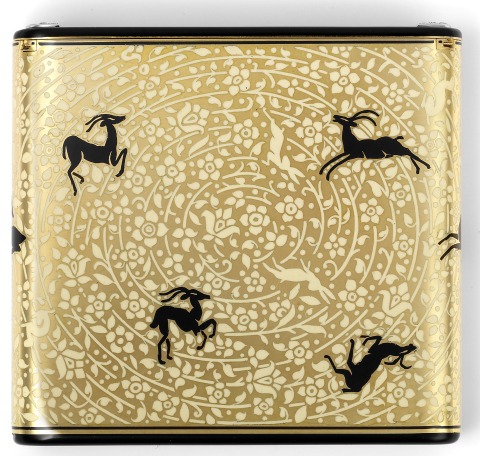The Denver Art Museum exhibition Brilliant: Cartier in the 20th Century is divided into six sections, including one on the Art of Smoking. At the turn of the century smoking in polite society largely was limited to men and Russian women. As social norms loosened, cigarette smoking was widely adopted, and elegant smoking accessories became a necessity for fashionable men and women. The exhibition features cigar cutters, cigarette cases, and lighters from 1907 through the 1940s.
In the United States, cigarette smoking became popular in the last part of the nineteenth century. Before this, temperance groups worked to discourage the so-called “wicked habit.” Some states even passed bills making the sale of cigarettes illegal.
Attractive packaging, however, along with an aggressive marketing campaign and the growing vogue factor, all worked to increase the cigarette’s popularity. Soon, daring women began to smoke openly in public in a new spirit of liberation; the official stamp of approval was given when upper-class women adopted the habit as well. Sales of smoking accessories for ladies were on the rise, and Cartier was just one of many jewelers to make items for women following the trend.
By the 1920s, cigarette cases were an accessory staple for many women of all societal ranks. Cartier designed and created a wide variety of these accessories, made with precious metals and fine jewels. The firm provided new tobacco trendsetters with a fabulous array of smoking accoutrements. Luxury companies like Cartier designed elegant smoking accessories including beautifully detailed cigarette cases, cigarette holders, and clips that prevented unsightly nicotine stains on ladies’ fingers.
Cartier’s cigarette holders from the 1920s were especially lavish affairs. Many of the women’s cases were richly decorated with fine jewels or exotic enameled patterns. The men’s cases were only slightly more subdued. Other extravagant accessories included sleek table-top cigarette boxes, stacking ash trays, and clever matching lighters. By the 1970s and 1980s, knowledge of the serious health concerns associated with tobacco use spread, and the habit quickly began to lose its fabled mid-century glamour.

